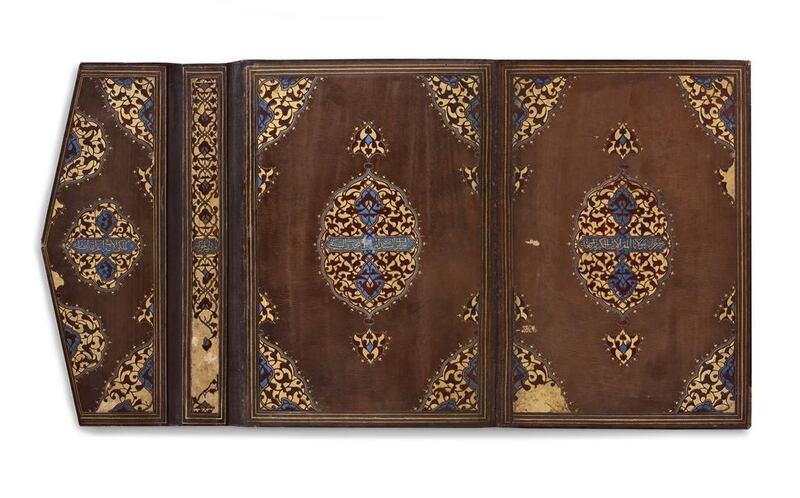The first major exhibition of Qurans in the United States has just opened at the prestigious Arthur M Sackler Gallery, bringing prized artworks from Istanbul’s Museum of Turkish and Islamic Arts to Washington, DC. The show features more than 60 manuscripts from the holy book, many of which have never been shown outside Turkey and which highlight the craft and scholarship in which they were made. The manuscripts span almost 1,000 years, from eighth century Damascus to 17th century Istanbul, via Cairo, Baghdad and Samarkand, and include significant artworks from the Smithsonian’s own comprehensive collection of Islamic art.
The Art of the Qur'an: Treasures from the Museum of Turkish and Islamic Arts discusses many themes important to the production of the Quran, both as an artistic and a spiritual endeavour, from the evolution of parchment, paper, gold and inks, to their status as prized personal possessions, as well as statements of authority.
“This exhibition offers a unique opportunity to see Qurans of different origins, formats and styles and begin to appreciate the power and beauty of the calligraphy as well as intricacy of the illuminated decoration,” says Massumeh Farhad, chief curator and curator of Islamic art at the Arthur M Sackler Gallery and Freer Gallery of Art. “Although each copy of the Quran contains an identical text, the mastery and skill of the artists have transformed it into a unique work of art.”
“The Museum of Turkish and Islamic Arts in Istanbul has one of the most extraordinary collections of Qurans in the world, yet its holdings are little known, even to many experts,” says Julian Raby, director of the Sackler and Freer galleries. “This exhibition provides an unparalleled opportunity for audiences in the United States to appreciate the artistry of Muslim scribes and craftsmen over more than a millennium, in regions from North Africa to Afghanistan.”
The museum’s exhibition website (at www.asia.si.edu) is also well worth a visit to take a closer look at several manuscripts from different historical periods. You can flip through the high-resolution pages of some of the holy books on display, with accompanying notes explaining their unique characteristics.
A symposium on the art of the Quran is being held at the local Turkish Embassy and Smithsonian’s Ripley Center from December 1 to 3, to discuss the material culture of the Quran from production to ownership, as well as putting the manuscripts in a historic and linguistic context.
• The Art of the Qur’an: Treasures from the Museum of Turkish and Islamic Arts, is being shown at the Arthur M Sackler Gallery, Washington, DC, until February 20. For further information, visit www.asia.si.edu.
Clare Dight is editor of The Review.





